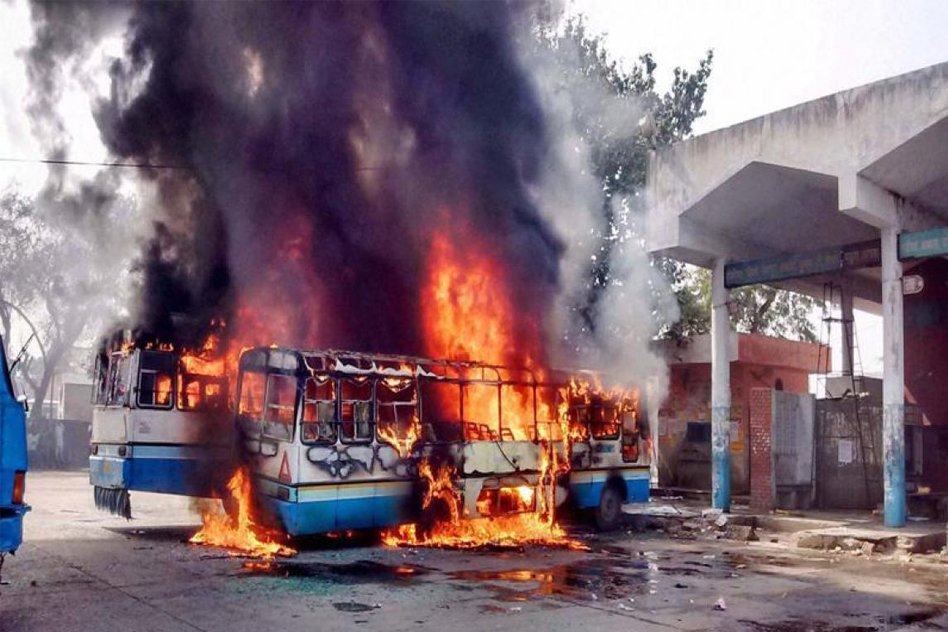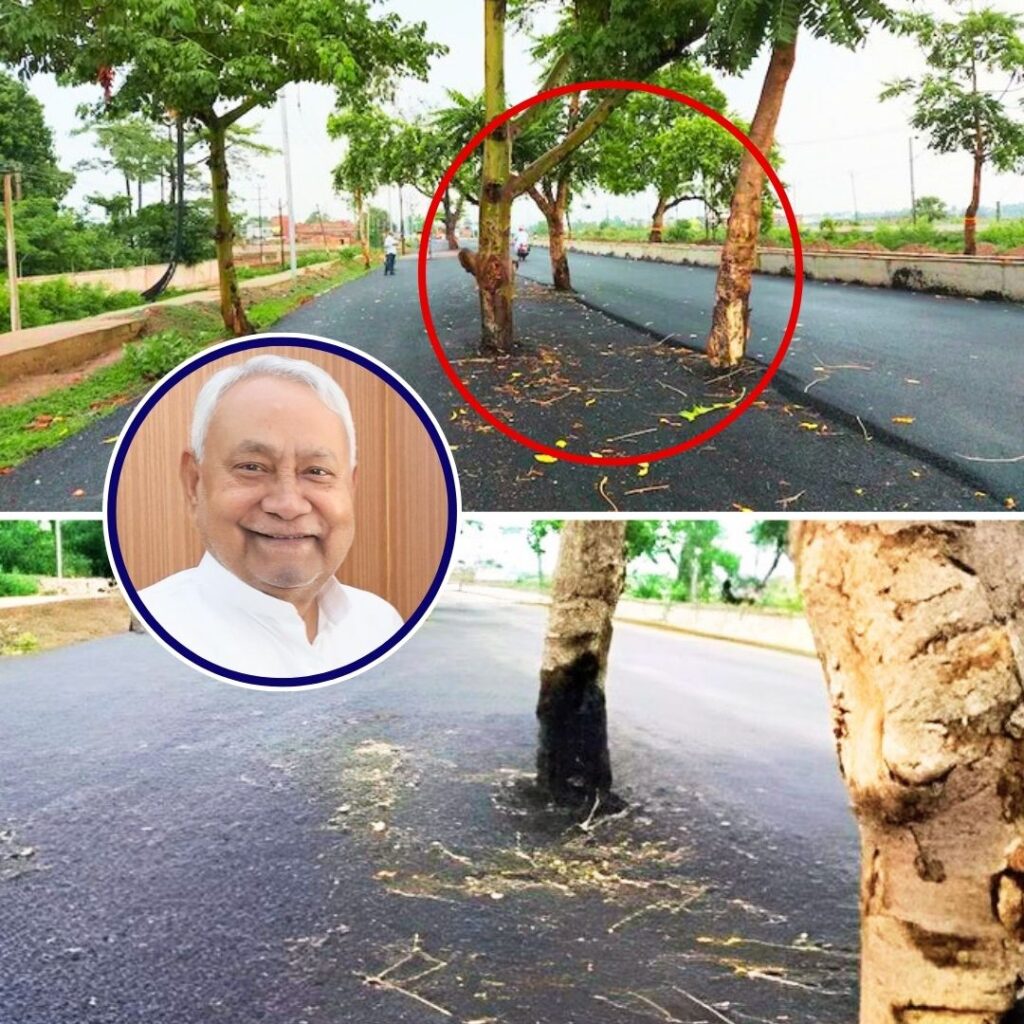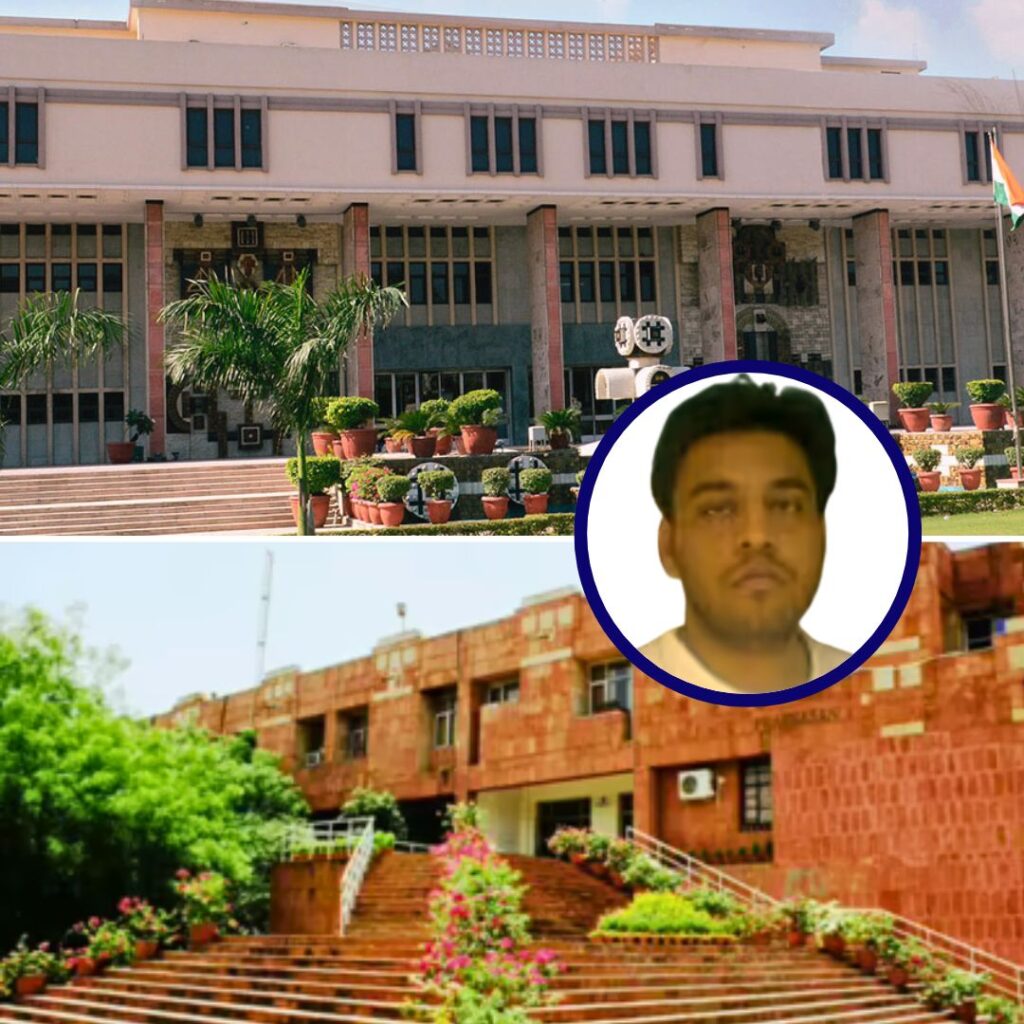Image Courtesy: banglatribune
Politics of quota and reservation
It was 10 days of mayhem, looting and arson that set new benchmark for violence in the country. The situation was tad similar to many riots country has seen and gives us a chilling insight into what happens when mob mentality takes the stage. For those living in Haryana seeing their cities burn to the ground in front of their eyes was horrifying and scary. It is like being in one of those situations when the people who you thought were just your next door neighbours will give up all tenets of a civilized society and become neighbours from hell. Whether they be Jats or whether they be anyone else, violence and utter disregard for established and elected authority in the guise of getting reservation in Government jobs through violence cannot be condoned, at least not in the modern educated society. Many questions have been raised by both who protested and those who lost everything as they fell victim to looting and arson and the responsibility lies with the government of the day to answer them all. Let’s look at the questions raised and the aftermath of the protests.
What is the history and politics of these protests?
The Jats occupy their own place in the mosaic of stereotypes about different castes in India: a martial race, patriarchal, brawny, artless, proud, phlegmatic, blunt, impetuous, fight-ready and highly devoted to caste consciousness. The Jats are primarily a farming community who are politically very active in Haryana, Punjab and Western UP. Traditionally, they are politically and economically well off and have not been considered as backward in these states, especially in Haryana. Jat constitutes about 25-30 percent of Haryana’s population. the Jat quota stir can be traced back to the Mandal commission report of 1991. They were rejected inclusion in central OBC list by National Commission on Backward classes (NCBC). In 2008, Jats again made the demand for quota. All India Jat Arakshan Sangharsh Samiti (AIJASS) is the body spearheading the agitation and demand. It is headed by Yashpal Malik a real estate businessman who is active in Ghaziabad and Noida. In 2012, The NCBC again conducted a survey in 2012 to review the social and economic status of Jats in various states. In Haryana, it was found that jats occupied a social status equivalent to higher castes. The jats since then have continued their protests demanding reservation.
Image Courtesy: newindianexpress
What led up to the protests?
Hooda Govt. had promised Jats reservation in 2004. Before Hooda Govt. lost election in 2014 they had given reservation to Jats as Special Backward Classes to the tune of 10% along with 4 other castes. The central govt. had then announced reservation for Jats in 9 other states in central quota which were rejected by the supreme court in March of 2015. As BJP govt. came to power in Haryana, BJP MP Raj Kumar Saini had been making anti-Jat sentiments in other communities against Jats. A meeting was held by Saini which included all OBC caste members and it was alleged that anti-Jat comments were made there too. Non-Jat communities were asked to oppose jat protests.
Did the Jat vs non-Jat issue creep in?
The protests that had pro-Jat reservation leaning quickly took the shape of Jat vs Non-Jat. According to first-hand reports gathered by The Logical Indian, a large number of clashes took place between Jats and other communities in the fringes of Rohtak and Jind districts. A village of Dhanak community was attacked by Jats and in the clashes, both sides suffered losses. Some people have been reportedly missing and have not yet been counted among the dead. A petrol pump in Hisar was looted by protesters and the fuel was used to make petrol bombs. Now that the protests are over more incidents about non-jat shops being burned down while shops owned by jats were spared randomly. A group of Jat advocates who were protesting in Rohtak were confronted by Non-Jat advocates which sparked a confrontation. Their is no doubt that caste consciousness which was being fueled by hatred found an opportunity to vent out accumulated frustration and anger during the protests.
The extent of damage?
The damage due to the protests has been mindboggling. According to ASSOCHAM, the damage is to the tune of 20,000 Crore Rupees but other industry sources have quoted a figure of 34000 crores. Haryana Roadways which is struggling to improve services is the default target when such protests happen. Reportedly 33 buses had been set on fire and 99 others were partially damaged. Out of 387 LPG companies, 185 are out of stock. More than 25 petrol pumps had been damaged. Chevrolet and Hyundai showrooms around Rohtak were burned down and in total, more than 200 cars that were in stock had been set on fire. Munak Canal was damaged and will take 2 weeks to fully repair it. This means Delhi will have to face more days of water deficit. Himachal Pradesh Tourism has also taken a hit due to the violent protests. Railway property was also damaged and Northern Railways has estimated 200 crores worth of damage to the railway line, stations and freight trains. 850 trains were cancelled and 500 factories remain closed. Numerous videos of people vandalizing and destroying property have surfaced. Some incidents of Rape and molestation have also been reported which puts up a very disturbing view of the protests. The physical damage has no doubt been immense but the aversive caste consciousness and violence between communities has no doubt done extensive damage to the residents of Haryana.
Current Situation?
In total around 18 people have been killed during the protests. Although roads have been opened up for traffic tension still remains in certain areas. Curfew is still imposed in Rohtak, Sonepat, Bhiwani, Rewari and Jind districts. Schools in these districts remain closed for the third day as the administration reviews the situation. Fresh clashes have been reported at Kaithal on the morning of 24th February. Hooda and his son have been asked to leave the Rohtak district as people who lost their belongings are now on the roads protesting and shouting slogans against Hooda whose party is now under the scanner for inciting violence based on leaked audio tapes of his party members.
The solution?
The way agitation was handled by Khattar Govt. has been widely criticized. In fact, some of the BJP leaders have themselves voiced concerns on the handling of the situation. Supreme Court has clearly stated that caste itself cannot be the criteria for reservation. The only criteria can be social backwardness. Repeatedly NCBC has reported that Jats are not socially backward in Haryana. Even then if and when Haryana decides to implement quota for Jats it cannot exceed the 50% cap set by the SC. Now the only way out is to carve it out of someone else’s share. This will, in turn, agitate the other communities. The results will, in turn, be keenly looked on by other castes demanding reservation elsewhere such as Gujjars, Marathas, Kapus, Patidars etc. It is important that in the short term, govt. should take a firm stance against such demands. it should be kept in mind that everyone deserves justice and Quota Blackmailing cannot be condoned and should be fiercely opposed. Instead Govt. should introduce a point based system where economic backwardness takes the maximum weightage. The demand for reservation comes from the lack of jobs. February is the lean season for most rural areas and, therefore, govt. should come up with measures to check this seasonal unemployment. It’s high time that the Finance ministry relent on fiscal consolidation and focus somewhat on fiscal stimulus in some targeted areas so that such incidents don’t occur.



 Image Courtesy:
Image Courtesy:  Image Courtesy:
Image Courtesy: 







